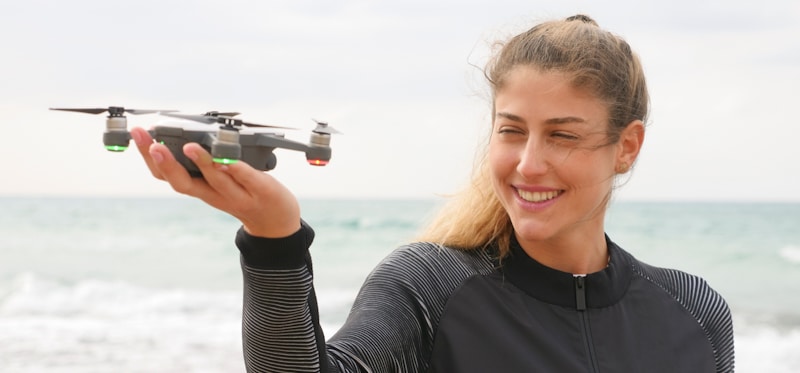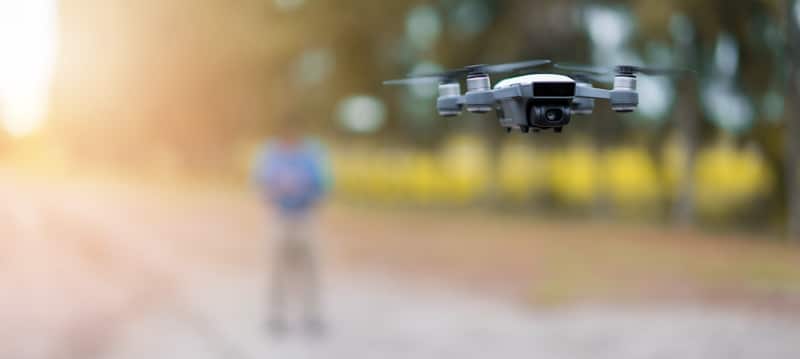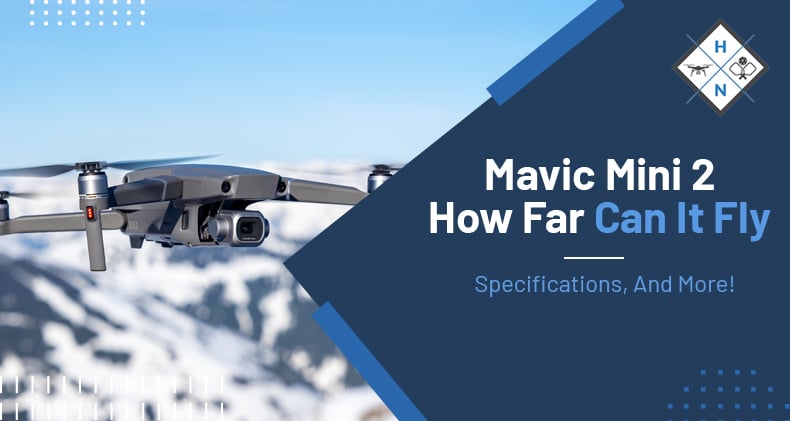DJI drone manufacturing company is one of the most popular manufacturers and also the leading manufacturer of drones. DJI has produced some of the top, most advanced, and innovative drones in the drone industry. One of the best DJI drones is the Mavic Mini 2.
The Mavic Mini 2 has a control range of 6.2 miles; however, there must be no form of signal interference in the area. This drone has a takeoff weight of less than 249 grams, a total flight time of 31 minutes, a diagonal distance of 213 millimeters, and a maximum wind speed resistance of 10.5 mph.
The DJI Mini 2 was developed on the feats of its predecessor, the Mavic Mini. It offers an enhanced camera quality while retaining the flexibility of the Mavic Mini. Several qualities and characteristics in the Mavic Mini 2 will interest any drone pilot.

Is The Mavic Mini 2 Worth It?
The DJI Mavic Mini 2 was released in November 2020, and it looks a lot like its predecessor, the Mavic Mini, but it has a lot more power. The 1/2.3" CMOS sensor on the latest edition can enable 4K video, which is a major advance over the 2.7K offered by the previous Mini.
The transmission system has also been improved to Ocusync 2.0, a significantly more reliable communication protocol that supports 2.4 GHz and 5.8 GHz. Aside from that, the Mini 2 has a much-improved controller that is heavier and easier to use with a smartphone.
In addition, stronger motors have been installed, allowing the drone to reach a top speed of 36 mph in sports mode. The Mavic Mini 2 can fly in strong winds and maintain impressive stability for such a small drone. It is a low-cost device with advanced capabilities that are simple to use.
If you are new to drone operation, it is best to find out the local drone restrictions before taking it out for a spin, although you do not need to register with the FAA if you are flying it for recreation. It is not easy to overstate how much the tweak in the controller improved the Mini 2 packaging.
The first Mini features a plastic model (fold-out) that has the feel of a video game; however, the new Mavic Mini 2 is heavier and more durable. Aside from the toggles, there is an RTH/pause button on the front face, a switch for the three flying modes, and two small function buttons. It is spotless, just like the drone, and gives the operator confidence.
The drone's main selling point is its enhanced 4K video system. However, there are additional features, such as the Panorama camera function, which automatically stitches together images in 180 and 360 degrees or a wide format. The results of video shooting are remarkably consistent, even when the air is turbulent.
It can readily withstand Force 4 circumstances while still producing a solid collection of photos. Its capacity to handle pretty strong changes in direction or even sudden stops is likewise impressive. Its controller is simple and includes extra function buttons for speedy responses.
How Far Can The DJI Mini 2 Fly?
The DJI Mini 2 is the smallest drone in the DJI store; although it is small, it is a very capable and trendy favorite. The DJI Mini 2 line is a wonder of modern engineering, with various high-end capabilities such as a maximum altitude of 4500 meters. We will look at the DJI Mavic mini 2 range.
The DJI Mini 2 uses Ocysync 2.0 and has a range of up to 10 kilometers (6.2 Miles). This is possible in locations where there is no signal interference. When flying, local rules, signal interference, and physical barriers limit the real range. When we talk about how far a drone can fly, it refers to the drone's transmission range and battery range.
The DJI Mini 2 uses the DJI Ocusync 2.0 transmission protocol, which has a theoretical range of 10 kilometers. If there is no interference and no obstacles, any drone using the Ocusync 2.0 can transmit and receive data from the remote controller at that distance. However, the transmission range of a drone has some limitations.

When it comes to transmitter wattage, each region has its own rules. Although the Ocusync 2.0 and DJI remote controller hardware can produce strong signals to cover a 10-kilometer radius, this is not permitted in all countries and regions. Hence, each region has its own DJI models and certification.
Even if you are legally permitted to use the Ocusync 2.0's full 10 km range, there are always interferences and impediments that restrict the effective range. The range is significantly limited in urban regions with many cell towers, home and office Wi-Fi, and other interfering signals.
Most times, people ignore the battery range of a drone when discussing how far it can fly. Even in a completely open environment with no signal interference and no legal restrictions, the DJI Mavic Mini 2's range is only about 10 kilometers. You will run out of battery power before it happens.
If you have been flying DJI for a while, you have probably observed that the drone automatically switches to Return to Home (RTH) mode when the battery is half-drained. If you do not initiate an RTH at this point, you risk losing your drone due to battery drain on the way back. In conclusion, your drone will be unable to reach a 10 km distance because its battery is not capable of that distance.
What Wind Speed Can DJI Mini 2 Fly-In?
The wind speeds a DJI Mini 2 can fly in refers to the drone's wind resistance level; this describes the highest wind speed the drone can resist. It is important to know the wind speed your drone can fly in. This is because the wind affects a drone during flight, and flying at a high wind speed for your drone can damage it.
In brief, all types of winds impact the UAV's airspeed, which affects the angle of attack and sideslip angle, which modifies the values of aerodynamic derivatives, and ultimately disrupts the UAV's consequent force and torque. Depending on the model, the maximum wind speed for all DJI drones is between 18 to 24 mph.
However, we are looking at the DJI Mini 2; its maximum wind speed resistance ranges from 18 mph to 23 mph. In m/s, the maximum wind resistance for the DJI Mini 2 is between 8.5 and 10.5 m/s. It would be best if you never flew a DJI Mini 2 at a wind speed above its resistance or capacity.
When you operate a drone at a wind speed above its capacity, it can have some notable effects. These effects include unpredictable movements, excessive battery drain, compromised sensors, and shaky images or videos. Some factors affect a drone's wind resistance level.
These factors are the weight of the drone, the shape of the drone, its size, engine power and thrust, software, and sensors. Hence, before flying a DJI Mini 2, you should find out the current wind speed of the atmosphere by using either a weather map or a portable anemometer.
Final Thoughts
When talking about DJI drones, the Mavic mini is one of the most common, popular, and best DJI drones. They are very easy to operate and have several high-quality features, making them a suitable drone for people of all ages. They are also small in size, making them durable and portable. You can get the Mavic Mini 2 if you want to get a DJI drone.
Learn More: VR Drone Operation, and More!
Shawn Manaher loves to play with new toys and dive into new hobbies. As a serial entrepreneur, work definitely comes first but there is always room for hobbies.

